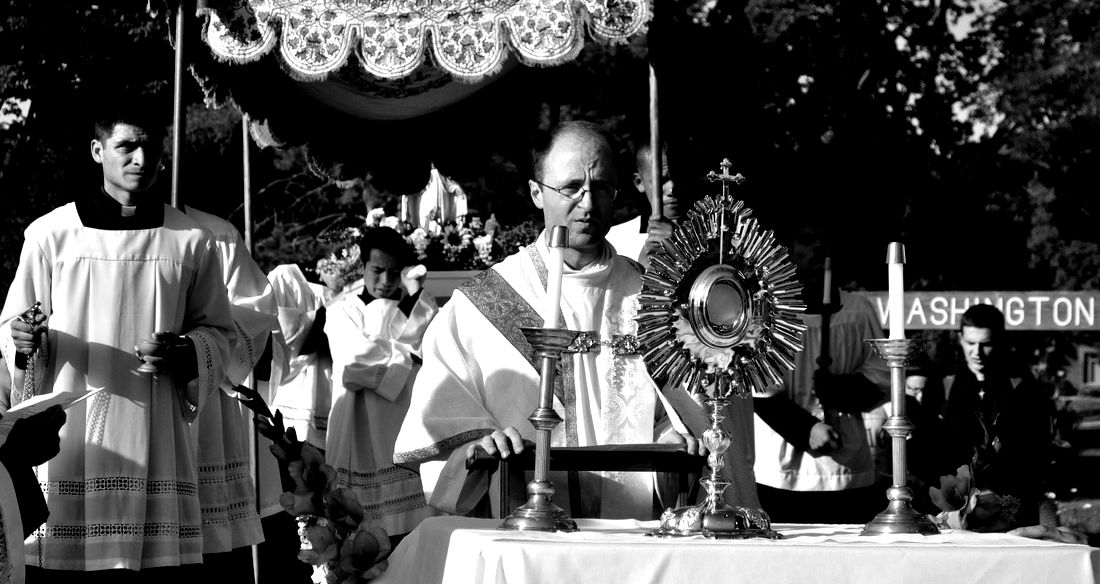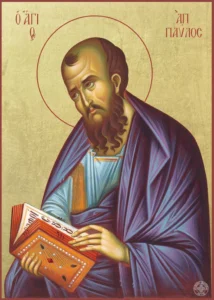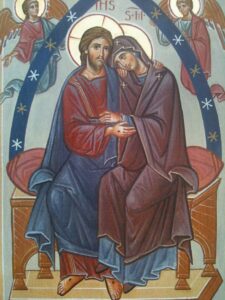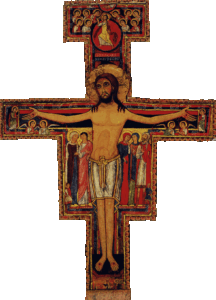Fr. Nathaniel Dreyer, IVE
Thursday of the Second Week of Ordinary Time
Eucharistic Procession during the IVE Popular Mission in Mankato, MN.
Today’s Gospel presents a brief summary of Christ’s ministry after He angered the Pharisees in yesterday’s Gospel. There are two things that call our attention: first, all the people who come to Jesus, and the second, what they find when they reach Him.
The Gospel tells us that “a large number,” or, more literally, “a great multitude” of people from Galilee and Judea were following Jesus, and that yet another “great multitude” came from all over to see Him: from “Jerusalem, from Idumea, from beyond the Jordan, and from the neighborhood of Tyre and Sidon.” This might not seem like much, until we consider that the walk from Jerusalem to Capernaum is 100 miles, and that Idumaea is in the deep south, between the southern borders of Palestine and Arabia. Even more surprising is that the cities of Tyre and Sidon, which lie on the Mediterranean coast, northwest of Galilee, are in Phoenician territory; they’re foreign lands.[1] Yet, all these people, Jew or foreigner, city dweller or country folk, simply heard what Jesus was doing, dropped whatever it was they were engaged in, and made the long journey to find Him and, with Him, the hope of healing. It speaks to the great faith of the people whose only connection with Jesus was hearing about Him, and, just on that hearsay, decided to go to Him. The irony is that the Pharisees, who are physically close to Jesus and His countrymen, refuse to draw near.
Secondly, when they reach Jesus, these people find, not only a whole bunch of other people, but that everything they had heard was true. This man was able to heal them, and restore them to life. Mark uses an odd word for “diseases.” He calls them μάστιγας (mástigas), which literally means “a scourge or lash with bits of metal in it.” When used for pain and suffering, it emphasizes how oppressive the pain is, how highly painful and debilitating. We can understand, then, the enthusiasm of the crowds as they draw near to Christ. They come to seek Him with their whole hearts, earnestly longing to find Him.
So, what can we take away from all this?
Regarding the first point, we certainly don’t have to walk 100 miles to find Jesus. We’re blessed to have Him in the Eucharist, present among us. But we can ask ourselves, how often do we come to visit Him? How do we treat Him here? Both the people and the demons confessed that Jesus Christ was Lord, but it only helped one group. Perhaps most of us probably wouldn’t be willing to walk 100 miles to do an hour of Adoration, and yet it’s the same Jesus who is present now as He was then.
Secondly, the people came to be healed of physical ills that caused great pain and debilitating suffering. However, all of us suffer from a far worse spiritual ill, sin, which can also cause great pain and suffering. The solution to this ill is also to be found in Jesus, particularly in the Eucharist. As Saint Bernadette said, “The Eucharist bathes the tormented soul in light and love. Then the soul appreciates these words, ‘Come all you who are sick, I will restore your health.’”
We can reflect on the words of Saint Teresa of Calcutta, who said, “The greatest love story ever told is contained in the Sacred Host. Here we see His glory in the depth of His humility, for God Who created the whole world and Whom the whole world cannot contain, contains Himself in the Blessed Sacrament for love of us, to be our Good Shepherd who ‘leads us to life-giving waters,’ to be our Divine Physician who ‘heals the brokenhearted,’ to be our Divine Companion in our pilgrimage throughout life.” We can ask ourselves: do we draw near to Our Divine Physician? Do we try to walk with our Divine Companion?
Let us ask, through the intercession of Mary, Mother of the Eucharist, for the grace to draw near to Christ, and there find the healing we need and desire.
[1] Cf. Barclay’s Commentary.






